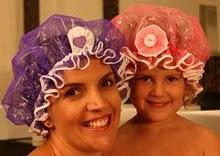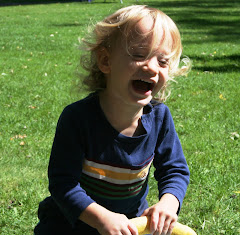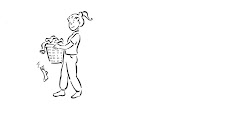
Head lice spread easily and infestations often occur at all social and economic levels, especially among school children who are in close daily contact. At least 10 million children are infected each year. Infestations are called pediculosis, which is a communicable disease. They vary in color from dirty white to reddish-brown to rust to grayish black in color.If the nymphal stages are passed on a person of blonde or light coloration, the adult louse is light in color, but if they are passed on a person of dark hair coloring, then the resulting wingless adult is more pronounced in coloration.
Lice are small - about the size of a sesame seed. They need a warm, moist habitat. They spread by crawling. They live by biting and sucking blood from the scalp and can not normally survive for more than 2 days unless they are on the human head. Eggs or nits (that look like tiny white or tan dots) are usually laid by the female close to the base of the hair near the scalp and they are firmly cemented to the hair. The eggs (and the empty shell) are known as nits and are always oval- or tear-shaped, and are glued at an angle to the side of the hair shaft. They are usually tan when alive and pearly or grayish white in color after dying. The nits usually occur near the scalp (clustered in groups), but can often be found nestled behind the ears and at the nape of the neck. The hatched egg is easily identified by its opalescent and translucent appearance. Just before hatching the eyes and other structures of the embryo can be made out through the translucent shell. On hatching, the top of the egg opens like a lid. Live nits may be occasionally found anywhere on the hair shaft, but normally they are found near the scalp and they are “super-glued” on and do not flake off like dandruff. They are so hard to remove we invented the term “nitpicking” to describe the difficulty. One louse can lay 150 nits a month (normal lifetime). They hatch in about 10 days, depending on the climate. Nits need at least 82o F.; and 70% humidity to incubate. During the incubation time the respiratory passages of the louse shut whenever the nits are immersed in water and they can survive under water for over 24 hours.The top of the egg supplies air and humidity to the developing louse.
Nymphal stages - There are three nymphal stages, all of which resemble the adult except in size and possession of sexual organs, but they do have some change in color. During the first stage the nymph is a pale straw color and has no central nervous system (CNS) and, therefore, can not be killed using volatile, synthetic pesticide neurotoxins or by poisons that attack the CNS. The poisons and the “inerts” in these volatile pesticides can and do, however, attack your CNS! The gut of the nymph is clearly visible through the almost translucent cuticle, and when the first-stage nymphs have taken a meal of blood they are shining red in color, like rubies. Afterwards the blood darkens and thereafter the gut appears purplish-black. The young nymph is able to feed almost immediately after emergence and after this feeds regularly, at least twice daily. The nymphs and adults feed by pressing the front of their heads against the skin of their hosts; a series of curved teeth around their mouths then fasten on to the skin and the piercing stylets are released from a pouch where they are normally invisible, to pierce the skin. Saliva from the salivary glands lubricates the stylets and they begin to feed on you. Enzymes create an extra “molt” they weren’t anticipating and will quickly destroy live lice and help remove nits/glue. Lice can not become resistant (immune) to LICENDERS products which contain enzymes to kill the lice.
Lice are small - about the size of a sesame seed. They need a warm, moist habitat. They spread by crawling. They live by biting and sucking blood from the scalp and can not normally survive for more than 2 days unless they are on the human head. Eggs or nits (that look like tiny white or tan dots) are usually laid by the female close to the base of the hair near the scalp and they are firmly cemented to the hair. The eggs (and the empty shell) are known as nits and are always oval- or tear-shaped, and are glued at an angle to the side of the hair shaft. They are usually tan when alive and pearly or grayish white in color after dying. The nits usually occur near the scalp (clustered in groups), but can often be found nestled behind the ears and at the nape of the neck. The hatched egg is easily identified by its opalescent and translucent appearance. Just before hatching the eyes and other structures of the embryo can be made out through the translucent shell. On hatching, the top of the egg opens like a lid. Live nits may be occasionally found anywhere on the hair shaft, but normally they are found near the scalp and they are “super-glued” on and do not flake off like dandruff. They are so hard to remove we invented the term “nitpicking” to describe the difficulty. One louse can lay 150 nits a month (normal lifetime). They hatch in about 10 days, depending on the climate. Nits need at least 82o F.; and 70% humidity to incubate. During the incubation time the respiratory passages of the louse shut whenever the nits are immersed in water and they can survive under water for over 24 hours.The top of the egg supplies air and humidity to the developing louse.
Nymphal stages - There are three nymphal stages, all of which resemble the adult except in size and possession of sexual organs, but they do have some change in color. During the first stage the nymph is a pale straw color and has no central nervous system (CNS) and, therefore, can not be killed using volatile, synthetic pesticide neurotoxins or by poisons that attack the CNS. The poisons and the “inerts” in these volatile pesticides can and do, however, attack your CNS! The gut of the nymph is clearly visible through the almost translucent cuticle, and when the first-stage nymphs have taken a meal of blood they are shining red in color, like rubies. Afterwards the blood darkens and thereafter the gut appears purplish-black. The young nymph is able to feed almost immediately after emergence and after this feeds regularly, at least twice daily. The nymphs and adults feed by pressing the front of their heads against the skin of their hosts; a series of curved teeth around their mouths then fasten on to the skin and the piercing stylets are released from a pouch where they are normally invisible, to pierce the skin. Saliva from the salivary glands lubricates the stylets and they begin to feed on you. Enzymes create an extra “molt” they weren’t anticipating and will quickly destroy live lice and help remove nits/glue. Lice can not become resistant (immune) to LICENDERS products which contain enzymes to kill the lice.
LICENDERS is the largest professional service in the northeast and has treated thousands of children. Now we have two clinic's in Israel. RoshNakki "Clean Head" ROSH NAKKI has offices in Jerusalem and Ranaana,both locations offer the service done in the comfort of your own home! The Jerusalem office is located in the Medical Center in the Wolfson Building Rechov Diskin 9A. The Ranaana office is located on Achuza St 96 Mercaz Elram entrance level. Call for an appointment or just to ask questions. 0775506369 or e-mail ROSHNAKKI@NETVISION.NET.Il All LICENDERS Products are gentle on the scalp but harsh on the bug.http://www.roshnakki.co.il/ ,http://www.roshnakki.com/ & http://licenders.com/






























